We are on the short flight from Cusco to Lima, so it’s time to play catch up. Our days have been so jam packed that I haven’t had the energy to write posts. A side note: we have a charter flight just for our group, and it’s an Airbus 320–for 85 people! Also, I am using an app to create posts offline and am learning as I go. Sorry if the pictures are weird sizes, I’m downsizing them for faster loading. This post may jump around a lot, as I’m pulling together notes from several sources.
I’ll start with some background on Peru and Cusco. Because of the mountains, driving from Cusco to Lima takes 18-22 hours! The flight, however, is only 1 hr., 20 minutes (403 miles). Cusco is at 11,000 feet, so we have had some issues with altitude—relatively minor, fortunately. Even though Cusco is so high, it doesn’t snow; in the Andes snow line is 15,000 feet. Cusco is growing rapidly, with lots of construction. Our guide told us it is the oldest city in the Americas that has been continuously inhabited, more than 2000 years. The city is very hilly, with homes built into the hillsides, lots of terracing, and retaining walls, as you can see in this view from our room.
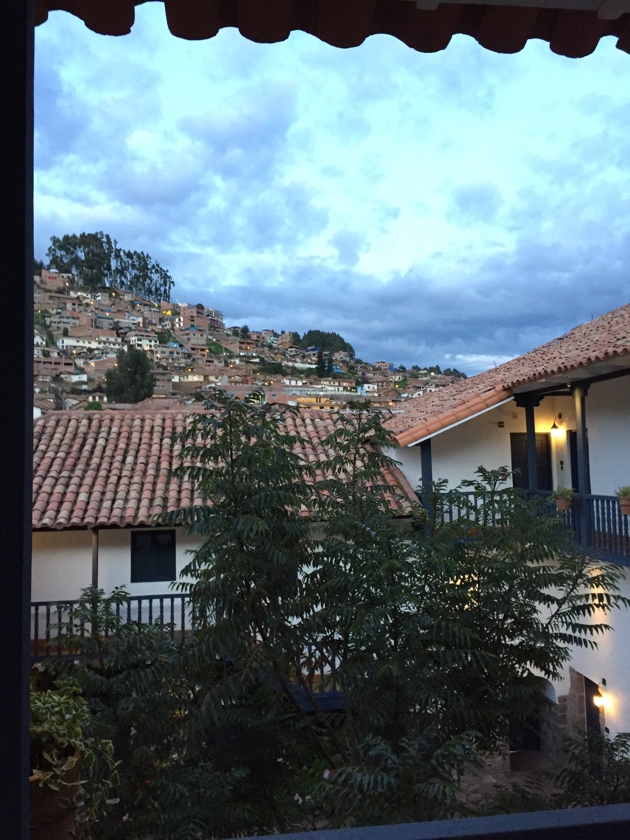
The Incas were masters of agricultural cultivation, and for centuries Peruvians have grown crops in Andean valleys, even at 12,000 feet (the tree line level). Around Cusco potatoes are the main crop, because they do well in the mountains, and Peru has a National Institute of Potatoes. There are 3,400+ varieties, with different types best for different uses (e.g, mashed, baked, etc.). Corn (156 varieties!) is grown in mountain valleys, so we could tell when we were at lower elevations as we drove around. Quinoa, now a popular food worldwide) originated here and comes in 12 colors. Here are potato fields. (You know what corn looks like! However, Peruvian corn varieties are different, many with huge kernels.)
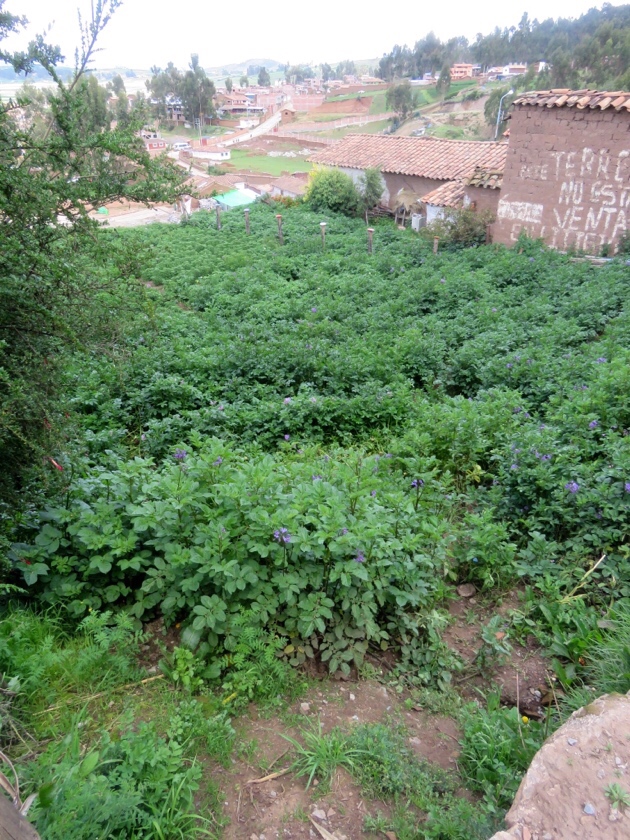
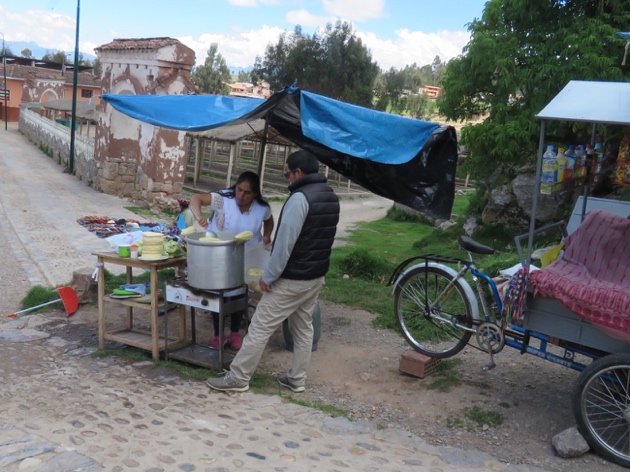
Over time the Incas and Spanish intermarried and are called mestizos. For a long time, the Inca heritage was looked down upon, so they emphasized their Spanish roots. In about 2000, there was an upsurge in Inca pride. Each Inca town has its own style of hat. Vendors sell a variety of styles. Everywhere we saw women with tall white hats, called Mestizo ladies. Those hats aren’t for sale!
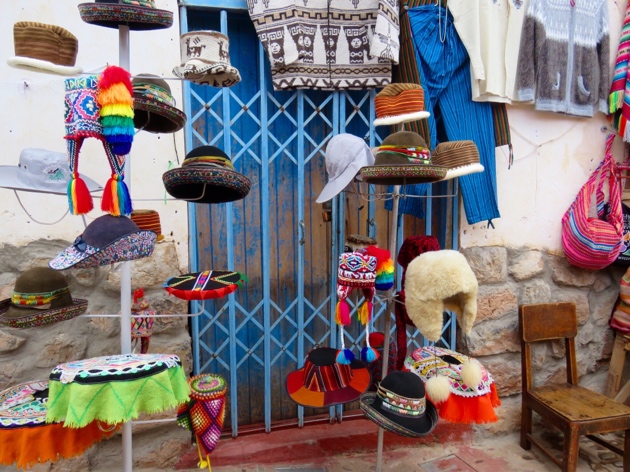
As we drove into Cusco we got our first glimpse of the old (400-500 years?) Inca walls at the base of many buildings. The Incas were master architects and craftsmen. Even though the stones may look as though they are set at perpendicular angles, they are not. And the wall itself is not perpendicular to the ground. Why? Because this creates stronger, more earthquake resistant buildings. You will see many more examples of this in my next posts. This is one of the old walls in the city and the stones are quite rough-cut.
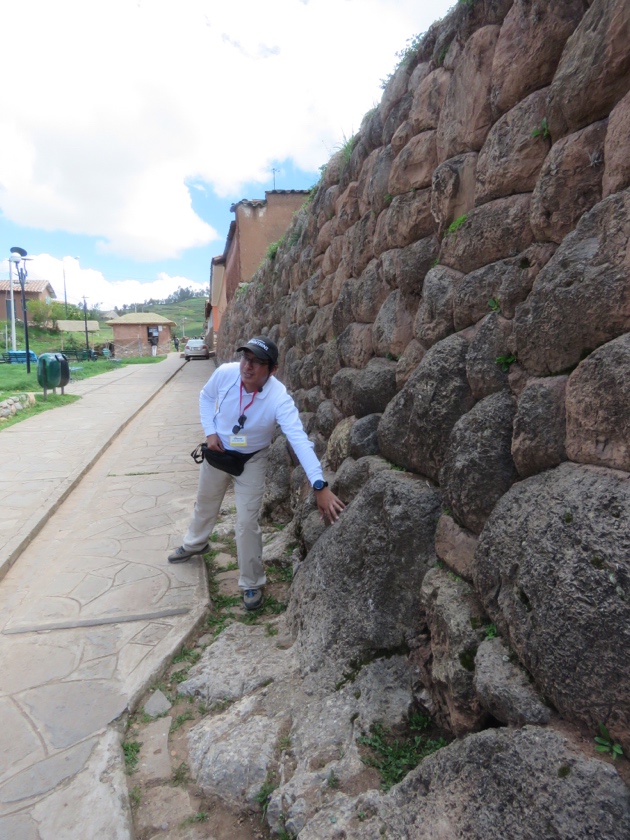
Now on to some information about Incan cuisine. Inca diets were hi carb, low protein, with lots of potatoes, corn, fava and other beans, peppers, and other vegetables. Sources of protein were few, so they turned to Guinea pigs for meat, as they are easy to domesticate and raise. Today Guinea pigs are a delicacy—one we chose not to sample. Alpacas are now raised for meat as well as their wool. The meat is very healthy and low on cholesterol. I did taste alpaca, as you will see later.
The indigenous populations had llamas and alpacas to use in the fields. The Spaniards brought Oxen, which became prized and considered good luck. On the roofs of most houses, you will see statues of oxen with the cross, for good luck and prosperity.

A few more facts about Peru and we’ll call it quits for this post. Peru is a big exporter of minerals, especially copper. It is also is a major fishing country and big producer of fish meal. Also anchovies for you Caesar salad and anchovy pizza lovers.
Next post: Chinchero.
.

Love it all!!!
Great to travel along with you and Don…really enjoying your posts…and once again filled with admiration that you find the time and energy to do it..xoxo
Glad you appreciate it! It hasn’t been easy. Will be writing posts on very long flight today.